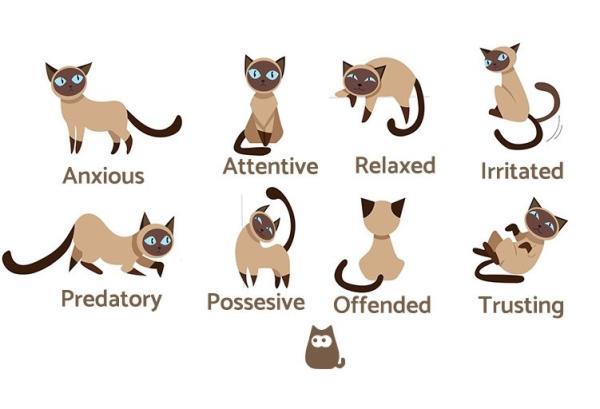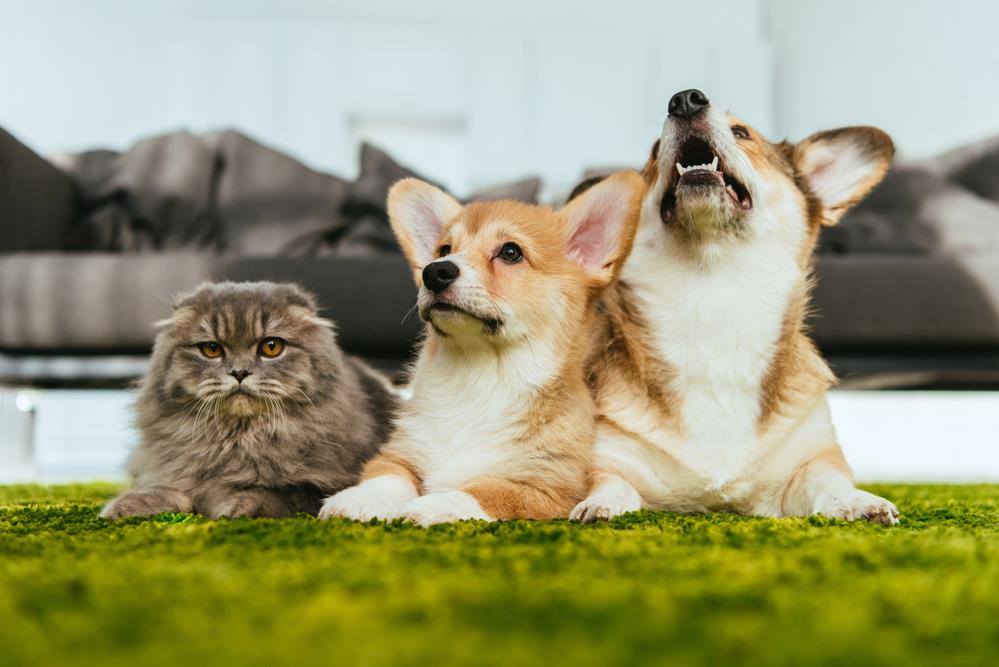Decoding your pet’s body language is a fundamental aspect of responsible pet ownership. Understanding these non-verbal cues can enhance the bond between pet and owner, prevent misunderstandings, and even avert potential dangers. It’s akin to learning a new language, one that involves keen observation and empathy.
Different Forms of Animal Communication
Communication between animals isn’t restricted to body language alone. It also involves vocalisations, scent marking, and touch. Each species, from dogs and cats to birds and reptiles, has its unique communication style, underscoring the importance of species-specific knowledge.
Decoding Dog Body Language: Postures and Meanings
Understanding your dog’s body language is essential for effective communication. Common postures include the ‘play bow’, which signals a desire to play, and a hunched back, often indicative of fear or submission. A relaxed posture, on the other hand, suggests your dog is comfortable and content.
Understanding Canine Facial Expressions and Sounds
Facial expressions and sounds are another key aspect of dog communication. Dogs utilise a range of sounds, including growls, barks, and whines, each carrying a unique message. Similarly, a dog’s facial expression can reveal much about its emotions. For instance, wide eyes often indicate fear or surprise, while relaxed, half-closed eyes suggest contentment.
Tail Wagging: Not Just a Sign of Happiness
Many people believe a wagging tail solely indicates happiness. However, research reveals that the direction and speed of the wag can convey a variety of emotions. For example, a slow wag with the tail at half-mast can be a sign of insecurity. ng Cat Body Language
Understanding your feline friend’s body language can enhance your bond and improve pet care. Cats communicate using a combination of postures, facial expressions, sounds, and tail movements.
Understanding Common Cat Postures and their Meanings
When a cat feels relaxed and content, it tends to lie on its side or sit with a straight and relaxed tail. If your cat is hunched with its tail wrapped around its body, it may be feeling afraid or anxious. A defensive cat may arch its back and puff up its fur to appear larger.

Reading Cat Facial Expressions and Sounds
Cats express their emotions through subtle facial expressions and a variety of sounds. A relaxed cat will have half-closed eyes and a soft purr, while a tense cat may have wide eyes and hiss.
Significance of a Cat’s Tail Movements
A cat’s tail movements can reveal its emotional state. A high tail indicates confidence, while a low one suggests fear. Rapid tail flicks can convey agitation.
Deciphering Bird Body Language
Understanding your pet bird’s body language is a subtle art that can enhance your connection with your avian friend. Birds communicate their emotions and intentions through a variety of postures, vocalisations, and feather movements.
Common Bird Postures and Their Meanings
Puffed-up feathers often indicate a relaxed and comfortable bird, while crouching with flattened feathers can suggest fear or aggression. A bird standing on one leg typically signifies contentment and ease.
Bird Vocalisation: The Language of Birds
Birds use a rich tapestry of vocalisations to express their emotions. Chirping usually denotes happiness, while hissing or growling might indicate annoyance or fear. Recognising these different sounds can help you respond appropriately to your bird’s needs.
Wing and Feather Movements: What They Signal
Flapping wings can denote a need for exercise or excitement, while raised wings might suggest a threat or a desire to play. Similarly, preening is a sign your bird is comfortable and content in its surroundings.
By understanding these signals, you can build a stronger, more empathetic relationship with your pet bird.
Recognising Fear and Stress in Pets
Understanding your pet’s body language is critical for identifying signs of distress. Fear and stress can alter your pet’s behaviour significantly. Cats, for example, may hiss or growl, while dogs might whimper or pace. Other signs include excessive grooming, appetite changes, and destructive behaviour.

Effects of Fear and Stress on a Pet’s Body Language
Fear and stress can impact your pet’s body language dramatically. You may notice your pet becoming more withdrawn or aggressive, or exhibiting other unusual behaviour.
Tips for Comforting and Calming a Stressed Pet
- Provide a safe space for your pet to retreat to when they’re feeling stressed.
- Engage in positive interactions to distract your pet from their fears.
- Consult with a vet or a pet behaviourist for professional guidance.
Recognising Signs of Aggression in Pets
Animals, just like humans, can exhibit aggressive behaviours for various reasons. These can range from growling and snarling to snapping or biting. Understanding your pet’s body language is key to deciphering these signs. An aggressive cat may lash its tail, while an aggressive dog might bare its teeth.
Aggression in pets can be triggered by a multitude of factors; ranging from fear and stress, to territorial instincts or health issues. Recognising these triggers can assist in managing your pet’s behaviour and keeping both you and your pet safe.
Managing and Mitigating Aggressive Behaviour
- Establish a safe and calm environment for your pet to reduce stress-related aggression.
- Consult a veterinary behaviourist for professional advice.
- Ensure your pet is healthy and not in pain to avoid aggression triggered by discomfort.
Remember, understanding your pet’s aggression is the first step to mitigating it.
Identifying Illness through Body Language
Before your pet can show any visible signs of illness, you might notice subtle changes in their body language. This could be an alteration in their posture, a reduction in activity or even a change in their facial expression. Understanding these signs can be critical in identifying when your pet may be unwell.
When to Seek Veterinary Help
While changes in body language can be an early warning sign, it’s important to seek veterinary assistance if these changes persist or worsen. Pets might not always show clear signs of distress, which is why it’s essential to be observant.
Ultimately, understanding your pet’s body language is a key component in ensuring their wellbeing. By staying attentive to these signs, you can provide the best possible care for your furry friend.
The Importance of Understanding Pet Body Language
Observing and understanding your pet’s body language is crucial in nurturing a stronger bond between you and your furry friend. This non-verbal form of communication offers a window into their mental and emotional state, helping you respond appropriately to their needs.We always like to emphasise the significance of this understanding, noting that misinterpretations can lead to behavioural issues and a diminished wellbeing for the pet.
Every pet is unique, with their own distinct communication style. Investing time to decode these signals can be a rewarding experience, leading to a happier, healthier relationship with your pet. For instance, a wagging tail might not always mean that your dog is happy. It could also signal fear, aggression, or uncertainty.
Understanding your pet’s body language is an ongoing learning process which strengthens the bond between pets and their owners. It’s a silent conversation that deepens your connection, enriches your companionship, and enhances your pet’s quality of life.


